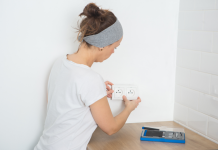Condensation can be a headache when it appears on your roof. It can damage your attic and the roofing materials when it occurs for a long time. Often, this problem becomes notable when the weather gets cold since the air condenses, forming water droplets on your roof.
This problem can be confused with leaks since the damages are similar. Damages caused by condensation are worse since it covers a huge part of the roof than leaks. Some of the reasons there is condensation on your roof that this website roohome.com states are:
Poor Ventilation
Proper house ventilation helps get rid of bad smells in the house and creates a relaxing environment. You can ventilate your home naturally by opening the windows, having enough eave vents, and a good height between floors. If you cannot open windows because of the location of your house, fans and ventilation systems become handy.
If you fail to ventilate your house for any reason, the air accumulates inside your house because it is not adequately getting released. You barely notice it when the weather is warm because the roof is also warm.
When the weather becomes cold, the trapped air touches the cold roof, cooling down into water droplets.
Wet Trades Dying Out
This cause of condensation affects the new buildings. The problem can prolong if the building is poorly ventilated. Wet trade building materials include cement, mortar, and cement. They are mixed with water during construction for efficiency.
As these materials dry, they release the moisture to become solid. The released moisture can hit any surface – walls, roofs, windows, and any other hard surface. You then start noticing condensation on your roof.
Un-Insulated Loft Hatches
Your loft hatches must be insulated to prevent condensation from taking place. When you leave yours un-insulated, moisture enters your loft space. This is where condensation takes place as the warm air hits cool surfaces.
After some time, your ceiling starts getting ugly patches. Why? Because the condensed water starts flowing as it finds its way out on the inside part of your roof. If there is no exit, it forms pools, which become visible as patches.
Loft Insulation
We all love the idea of cost-saving. Loft insulation promises to reduce power expenses as it helps with temperature control. It prevents cold air from entering the house during cold weather.
However, this insulation prevents proper ventilation. Because warm air from the house lacks a way out, it starts condensing on your roof.
Preventing Condensation on Your Roof
Homeowners can enjoy having condensation-free roofs. You can prevent it from taking place on your roof by:
1. Use a Dehumidifier
A dehumidifier can help you get rid of humidity in areas where natural ventilation is not a choice. It helps eliminate moisture produced in the house from daily activities such as cooking, showering, laundry, and others.
With a dehumidifier, you will have air that is free from moisture, and condensation will not occur.
2. Venting
Venting aims at allowing enough air to flow in your attic to prevent moisture from accumulating. It should be balanced to ensure your home’s safety is not compromised. When done properly, venting can help remove excess moisture and prevent condensation.
3. Insulation and Vapor Barriers
Insulating your loft hatches can help in reducing condensation. It should be properly done; otherwise, there will be no difference between un-insulated hatches and those that have been poorly installed. So, ensure your contractor is knowledgeable about these installations.
Use vapor barriers too to prevent major and minor condensation issues. They are not limited to new roofs only but can be used in old ones too. Their disadvantage is they are used during cold weather and should be removed when the temperatures rise. Otherwise, those that are kept intact create worse problems.
Have you noticed condensation on your roof and are worried it might become a major problem? The damage is not permanent, and you can prevent it from getting worse. Consider inspecting your house for the reasons we have mentioned here to see if they are the causes of condensation in your house. If you don’t know what to look for, you can find a roofing inspector to help you identify the problem.




